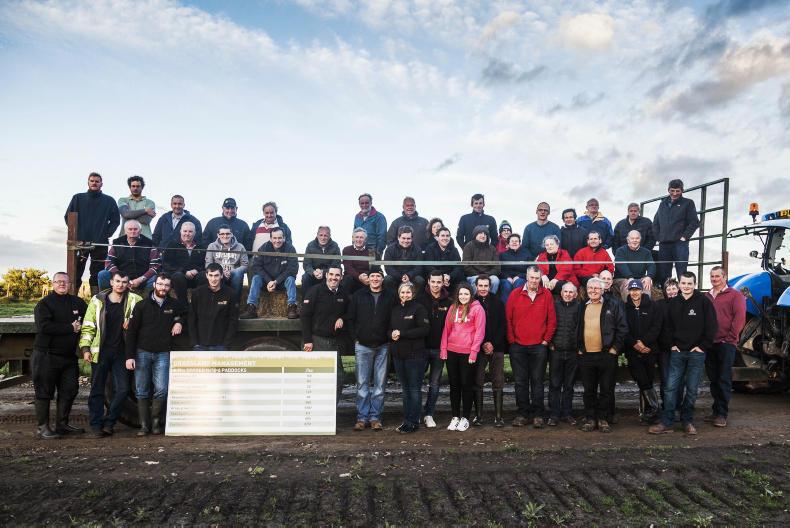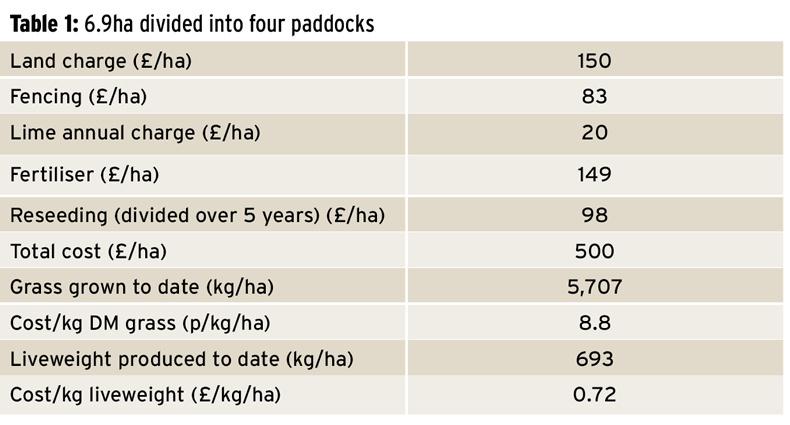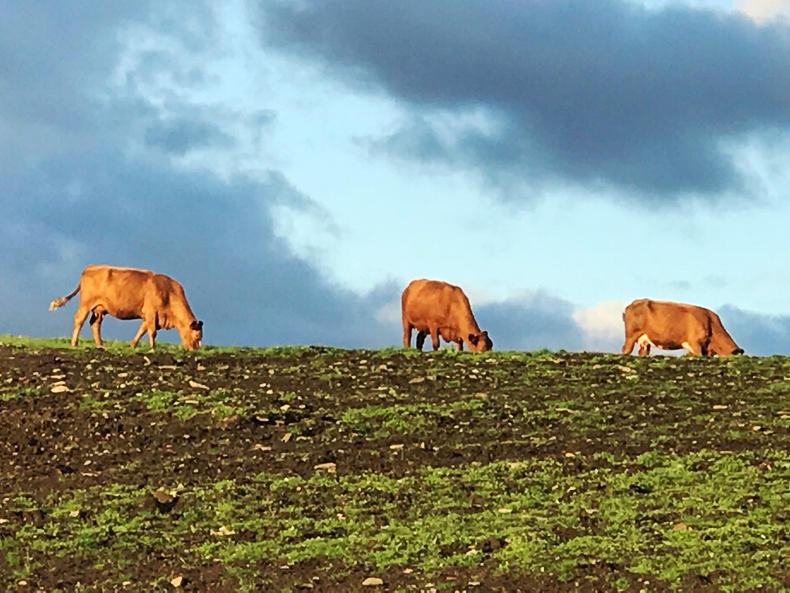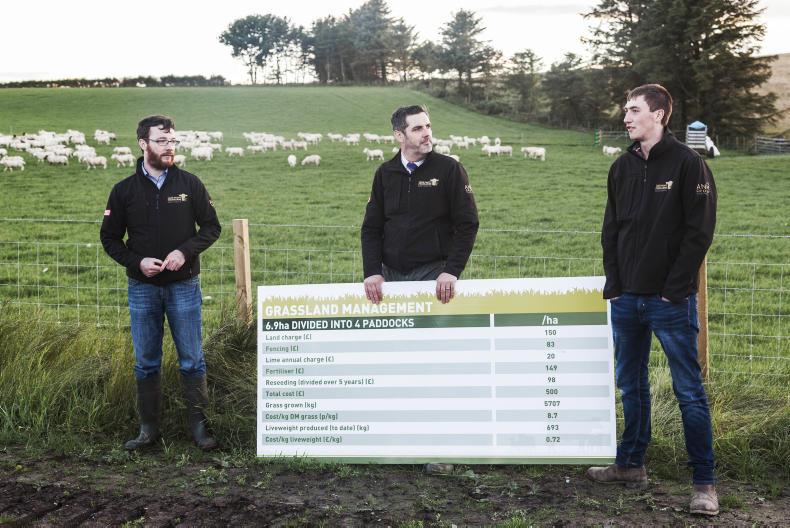The Duguid family farm 164ha just outside Aberchirder, Aberdeenshire. They run a 150 cow herd and a 230 ewe flock. Cow type is a mixture of Simmental and Salers cross. They are primarily mated to Charolais to produce store cattle for sale at about one year old. Heifers are mated to a Limousin bull replacements go to a Simmental bull. The ewe flock consists of Mule and Mule cross Texel ewes mated to Texel tups with ewe lambs mated with a Beltex. The farm is quite steep and runs from 180m up to 800m above sea level.
The Duguids
 Last week we hosted our local National Farmers Union (NFU) branch for their summer tour. It was the first farm walk since joining the Farm Profit Programme. Even though we have been looking at our business a lot over the last seven months, there is nothing like having a group of farmers come in to focus the mind once more.
Last week we hosted our local National Farmers Union (NFU) branch for their summer tour. It was the first farm walk since joining the Farm Profit Programme. Even though we have been looking at our business a lot over the last seven months, there is nothing like having a group of farmers come in to focus the mind once more.
It also gave us the opportunity to sum up the changes made to date and reflect on the differences they have made on the farm.
The biggest change here would be on the grassland side. We split a 7ha field into four even paddocks and have been rotating a group of 140 ewes with twin lambs around them since the first days of May.
Grass
As of last week we had grown over 5,700kg of grass per hectare on this ground. When we costed it out, (table 1) each kg of grass cost us just 8.8p to produce. This includes a land charge, reseeding costs, fertiliser and the temporary fencing used to split the field.
We have spread 85kg of nitrogen on this ground and it will get another 25kg in the coming week or so to build up grass into the back end of the year. We have produced 693kg liveweight/ha on this block. Dividing the cost of growing the grass by the number of kilos produced we get a cost per kg liveweight of £0.74. It will be interesting to see at the end of the year what the gross margin per hectare will be.

Lambs
We weaned the lambs last week. This was another change here at Cranna. We wouldn’t usually wean as early but I’m glad we have. Robert and Declan convinced us this was the best move. Trial work has shown that at 100 days old, less than a quarter of the lamb’s diet is coming from the ewe. Leaving ewes with the lambs longer than this actually reduces lamb growth rate because they are competing with the ewes for the best grazing. The lambs hardly made any fuss at all after weaning which just goes to show how little milk they were getting from the ewes at this stage.
The singles were 38kg on average and the twins and triplets averaged 31kg at 110 days old. While we had an early draft of lambs the week of the Highland Show, they seemed to have slowed down in the last number of weeks. We have put this down to the changeable weather in the last few weeks as they are well dosed and on good grass. Talking to other farmers they have noticed the same thing. That being said, we drafted anything over 42kg, and there was another 21 away this week.
Ewes
The ewes were put on a bare paddock to dry off for a week or so. We target to have the ewes going to the tup at a body condition score of between 3.5 and 4 to maximise litter size next year. We will go through them and pull out any culls or thin ewes and give them access to better grass, but looking at them at weaning most of them seem to be in good condition.
The rest will be run after the lambs on rotation to clean out the paddocks. This will give lambs access to the best grazing and will hopefully push them on again in the coming weeks.
Calves
All the spring calves were weighed last week and have averaged around 1kg/day since birth. There’s room for improvement here but we are hoping that delaying calving by about 10 days next spring and targeting an early as possible turnout, we’ll get cows to grass sooner after calving than other years.
This will help drive milk production in the cows which will transfer to kilos on the calves. We hope to push liveweight gain in the spring herd to 1.3kg/day throughout the grazing season.
Bulls
We had our local vet out to test the bulls this year for the spring herd as when we scanned the autumn calving cows there were 13 empty. We were able to trace most of these cows back to one bull. He had gone lame for a while during bulling but was given the all clear to go this season. It was frustrating to have that many empty but we will have to live with it. We will be keeping a close eye on bulling activity over the next few weeks to make sure there aren’t too many repeats.
Elsewhere on the farm second cut silage will be coming ready for cutting in a week or 10 days. We will hopefully be harvesting the winter barley shortly also which looks to be in good order. It’s hard to believe we are around to harvest time again.

As we move into August it’s time to be building up a bank of grass ahead of stock to carry them into the back end of the year. Grass growth has been fairly variable in the last few weeks but a light application of nitrogen now will help kick on growth.
Blanket spread 25 - 30kg/ha in the coming days. Where the farm is heavily stocked you might get a further application in the first week of September. Rotation length should also be starting to increase from around 18 days up to about 25 by the end of august.
This will be helped where there is more ground coming back into the rotation in the form of after grass from second cut silage.






 This is a subscriber-only article
This is a subscriber-only article

















SHARING OPTIONS: